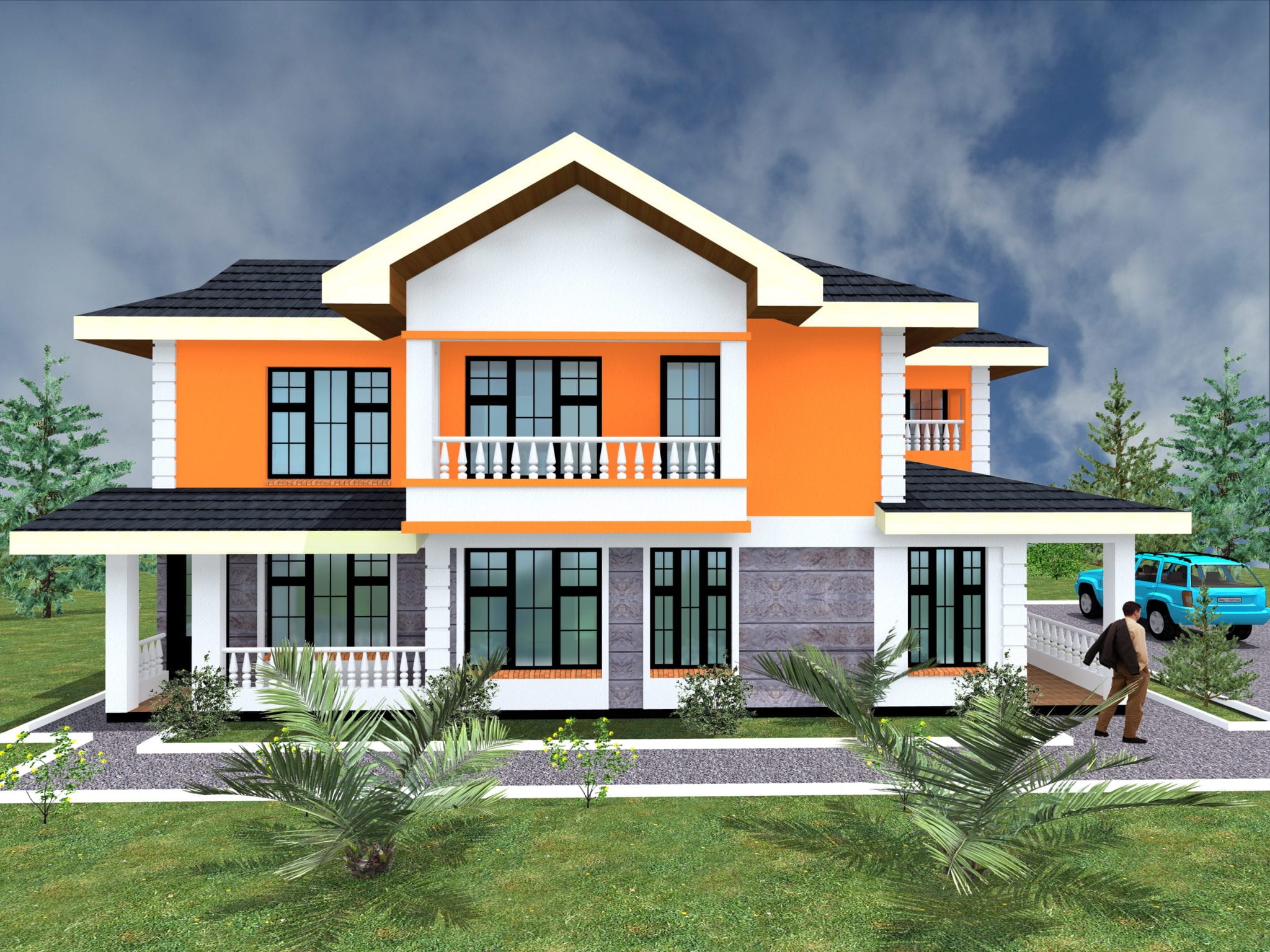Designing and Building Your 4-Bedroom Maisonette House: 4 Bedroom Maisonette House Plans Kenya

Embarking on the journey of building your dream 4-bedroom maisonette house in Kenya is an exciting endeavor. It’s a project that requires careful planning, meticulous design, and a keen understanding of the building process. This guide provides practical tips and considerations to help you navigate this journey successfully, ensuring your dream home becomes a reality.
Designing Your Maisonette
Designing a maisonette house involves considering various aspects, including functionality, aesthetics, and sustainability. Functionality refers to the efficient use of space and the layout’s ability to accommodate your lifestyle needs. Aesthetics encompasses the overall visual appeal and the chosen architectural style. Sustainability focuses on incorporating environmentally friendly features and practices that minimize the house’s environmental impact.
- Functionality:
- Space Planning: Carefully consider the layout of each level, ensuring that bedrooms, living areas, kitchens, and bathrooms are optimally placed to maximize space and functionality. For example, having the kitchen close to the dining area and the master bedroom with an ensuite bathroom enhances convenience and privacy.
- Natural Light and Ventilation: Maximize natural light by incorporating large windows and skylights. Adequate ventilation is crucial for a comfortable living environment, especially in Kenya’s tropical climate. Consider cross-ventilation techniques to ensure air circulation throughout the house.
- Storage Solutions: Plan for ample storage space to avoid clutter. Incorporate built-in wardrobes, shelves, and cabinets in bedrooms, kitchens, and other areas. This ensures your belongings are organized and readily accessible.
- Aesthetics:
- Architectural Style: Choose an architectural style that reflects your personal taste and complements the surrounding neighborhood. Popular styles in Kenya include modern, contemporary, Mediterranean, and traditional African.
- Exterior Design: Consider the exterior finishes, such as paint colors, roofing materials, and landscaping. These elements contribute to the overall visual appeal of your maisonette.
- Interior Design: Select interior finishes, such as flooring, wall coverings, and furniture, that create a cohesive and inviting atmosphere. Choose colors and textures that complement the architectural style and reflect your personal preferences.
- Sustainability:
- Energy Efficiency: Incorporate energy-efficient features, such as solar panels, LED lighting, and efficient appliances, to reduce your energy consumption and save on utility costs.
- Water Conservation: Implement water-saving measures, such as rainwater harvesting systems, low-flow faucets, and water-efficient appliances, to minimize water usage and conserve this precious resource.
- Materials: Choose sustainable building materials, such as recycled materials, bamboo, and locally sourced timber, to minimize environmental impact and support local industries.
Building Your Maisonette, 4 bedroom maisonette house plans kenya
Building a maisonette in Kenya involves a series of steps, from acquiring land to obtaining permits and hiring contractors. Each stage requires careful planning and adherence to building regulations and codes.
- Acquiring Land:
- Location: Choose a location that meets your needs and preferences, considering factors such as proximity to amenities, transportation, and security.
- Land Size: Determine the appropriate land size for your maisonette. Consider the size of your family, your desired living space, and any future expansion plans.
- Land Ownership: Ensure that the land you choose is legally owned and has clear title documentation. Conduct due diligence to avoid any potential legal disputes or land ownership issues.
- Obtaining Permits:
- Planning Permission: Obtain planning permission from the relevant authorities before starting construction. This involves submitting detailed plans of your maisonette for review and approval.
- Building Permit: Secure a building permit from the county government, which allows you to commence construction. This permit ensures that your project complies with local building regulations and codes.
- Other Permits: Depending on the location and specific requirements, you may need additional permits, such as water and electricity connection permits.
- Hiring Contractors:
- Research and Referrals: Thoroughly research and gather referrals for reputable contractors with experience in building maisonettes. Check their credentials, previous projects, and client testimonials.
- Contract Negotiation: Negotiate a clear and comprehensive contract outlining the scope of work, timelines, payment terms, and any warranties or guarantees.
- Supervision and Communication: Maintain regular communication with your contractor and supervise the construction process to ensure adherence to plans and specifications.
Building Regulations and Codes
Kenya has specific building regulations and codes that govern the construction of maisonette houses. Adhering to these regulations ensures the safety, structural integrity, and compliance of your project.
- National Building Code (NBC) of Kenya: This code Artikels the minimum standards for building design, construction, and safety. It covers aspects such as foundation design, structural elements, fire safety, and accessibility.
- County Building Regulations: Each county in Kenya may have additional building regulations that apply to specific areas. It’s essential to check with the relevant county government for any local regulations that might apply to your project.
- Professional Advice: Consult with an architect or structural engineer to ensure your maisonette design meets all applicable building regulations and codes. They can provide expert guidance and ensure that your project complies with all legal requirements.
